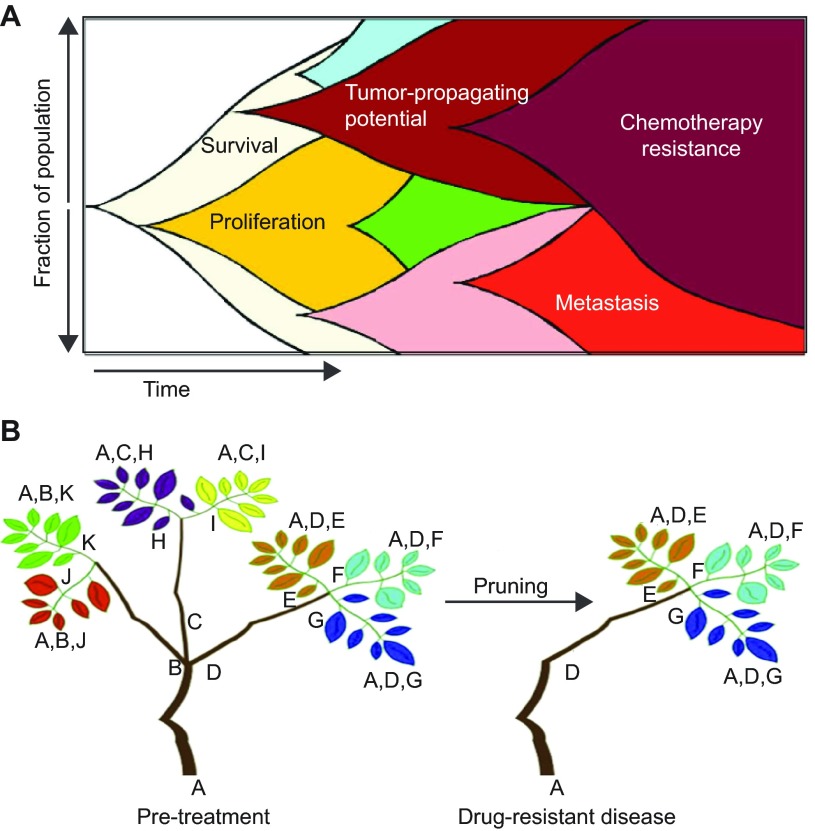Fig. 1.
Intratumoral heterogeneity and clonal evolution contribute to tumor progression, drug resistance and relapse. (A) Schematic of clonal evolution in cancer, in which all cells in the tumor originate from a single cell. Genetically divergent clones develop over time that have different functional properties (some examples of which are labeled) and yet co-exist with other clones within the tumor simultaneously. Adapted, with permission, from Marusyk and Polyak (Marusyk and Polyak, 2010). (B) Schematic of a phylogenetic ‘tree’ generated through analysis of sequencing data. Several founding mutations can be identified in every clone (mutations A–D). Acquired mutations are generated over time, resulting in extensive genetic heterogeneity, which are represented by the branches and different colored leaves of the tree. Targeted therapy ‘prunes’ the branches, selecting for drug-resistance mutations. Adapted, with permission, from Murugaesu et al. (Murugaesu et al., 2013).

